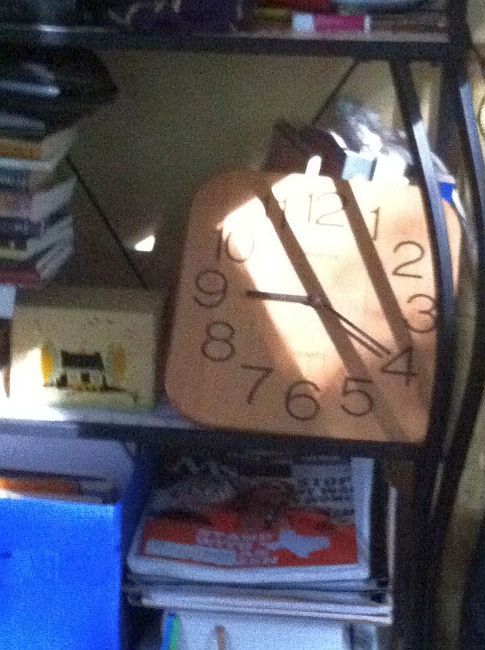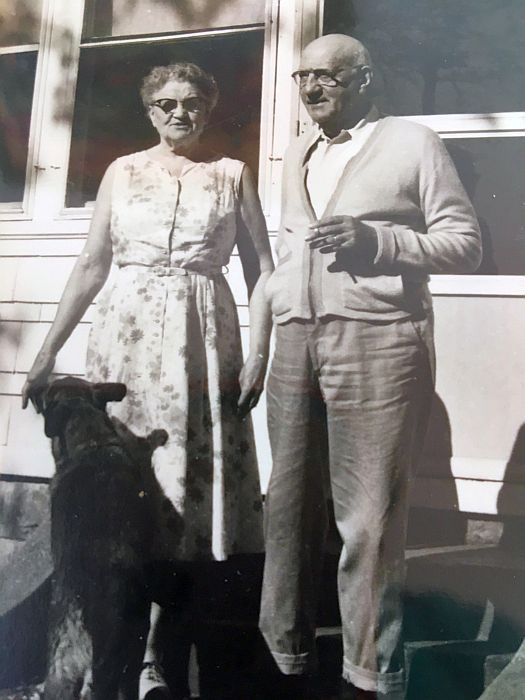
CURATOR – A Story in Seven Short Essays
Today at the Arboretum with friends, I watch a black rat snake lounge on slender branches in its vivarium, a tall acrylic box with quarter-inch ventilation holes. Its head floats in slow motion, spitting a forked tongue left to right as it slides down the branch. The snake’s checker-board skin and wide-set, unblinking eyes grab my attention. A voice behind me says, “Yes, every living thing exists in a world of its own limited and personal perspective.”
Not long ago I overheard a teenager say to his friends, “Has anyone really ever seen a woodpecker?” It bothered me that his world could be so devoid. In order to survive, living things depend on us.
Salamanders, Tree Frogs, and the Sedge Wren
It’s early spring 1952. I’m five years old, sitting on the back porch, concealed by a thicket of English Holly. I quiet my breath, and listen for the forage of the Towhee. The Mourning Dove arrives, sharing its call, a low to high cooing. Abundant Queen Anne’s lace, the crocheted flower with feathery spikes, floats in the distance.
I have questions about what I see, what I can get close to, or even touch. Because of the dove, I learn about crop milk, the parent’s regurgitation fed to the chicks. I ask a neighborhood kid if he knows about this, so I can tell him. If he says “Yuck,” I move on to the next kid.
The Rufous Towhee, the orange-black bird in the undergrowth, is a rustler and a scratcher. It lets me know about itself in ones, and twos, and threes. One is the high tone, two is a lower tone, and three is a short, quick line of chatter. My great aunt Blanche tells me that praying mantids, called “walking sticks,” have only one ear, and are related to the cockroach, which has no ears at all. I circle around the side of the house to head for the grassy ridge behind the tool shed, then rush back inside and deposit two mantids on the kitchen table.
Aunt Blanche says she’s seen loads of woodpeckers, and she knows about the spider wort, and bluets called Quaker Ladies, along with salamanders, vireos, bullfrogs and the skink with its flashing blue tail, iridescent in light—she shows me the Bobolink, the Blazing Star, and the Purple Vervain too.

Midsummer 1953
Mr. Bauschke’s truck wobbles up the road to the house. The tailgate slams down. Two steps back, on my tiptoes, I see the tops of bushel baskets, over-ripe peaches twice the size of my fist. Through the screen door, mason jars are lined up along the kitchen counter, ready for the water bath canner. It’s time to do what we do every summer, to preserve what we have. We sit in a circle around the Formica table where I learn to pare and slice, then ladle the pieces into slate-green jars that fit perfectly onto cellar shelves.
Bauschke’s farm, a few miles up the road, west of Watervliet, Michigan, is where acres of strawberry crowns shroud heart-shaped globes. My grandmother May, and her sister Blanche know how to snap off two or three ripe berries at a time.
This is the place we knew well, the watershed of the Great Lakes basin, encircled by the marshes and floodplains, cradled by the Paw Paw River and the forest along its way.
The Tall Grass Prairie of Illinois

“We shall never achieve harmony with land, any more than we shall achieve absolute justice or liberty for people. In these higher aspirations the important thing is not to achieve, but to strive.” Aldo Leopold, 1887-1948
It’s late fall 1954. I’m tall enough to see it from the upstairs bedroom window. My grandmother says the name “prairie,” and asks me to repeat it. She tells me we live “smack dab” inside the Illinois Prairie Peninsula, in what’s called The Great Plains of North America. The idea settles into my imagination, that the prairie, this huge waving grassland, is an important place. On winter nights when the north winds churn, the grasses become like cowlicks swirling into a sea of darkness that makes me shiver.
In the spring I invite three friends to go with me, all of us 7 or 8 years old. No parental permission is needed, because we want to keep things simple, and also this is a secret adventure, so keeping it to ourselves is essential. We know the story could end badly if parents got involved. One Saturday morning the four of us head up a narrow dirt path along the edge of the tallest grass, until we find a good opening. Turning in, we stick together, holding hands as we slog a long way through boggy Bluestem grass that’s twice as tall as we are.
We stand still to watch and listen. On this clear day, we can see through the soft plumes of Indian Grass to an open patch of shorter red and purple Switchgrass; it’s sunlit and teeming with insects, and small things scurrying underfoot among the coreopsis, indigo, button weed and thistle. Ground feeders, the grassland Flycatcher, Lark Sparrow and Shrike, fly upward in frenzy; their wings blur the sky.
We claim this as our spot for the summer. Each visit we bring along an old blanket, so we can sit on the ground in a circle, like a pow-wow. The formation takes on a ritual solemnity because we intend to talk about important things. All told, we travel there three times that summer, until we are found out.
In late September, bulldozers arrive just as the Switchgrass turns to gold.
There Used to be a Canopy of Elms over my Street

The elms protected us, but from what, I didn’t know. I hadn’t experienced enough trouble to describe what it was I feared.
It’s the spring of 1957. Block after block up Merrill Avenue, the trees look like sprouting lime-green domes. We play Hop Scotch on the sidewalk, sheltered under sprawling branches. By mid-summer, trailing afternoon’s heat, thunderstorms gather; the leaves crackle with the weight of the downpours. Each of us waits to see who quits the game first and races home. I’ll take the short-cut across Mrs. Soule’s back yard, under the clothesline, through the bottlebrush hedge, two short leaps to the back door, and I’ll have timed it just right.
Pinned on the wall inside the small pantry off the kitchen, my grandmother keeps a halftone, picture-postcard of an oil painting entitled, “1893 Chicago World’s Fair: THE SONG OF THE LARK, by Jules Adolphe Breton”. Gran was 15 years old when she went to the Fair. The painting is of a young girl in peasant dress wearing a babushka, an empty pouch slung around her waist. She holds a hand scythe, and walks a narrow dirt path through an open field, distracted by a sound in the distance. Day breaks golden-bronze at the horizon. She lifts her head to listen. The high-pitched reverie, imagined by the onlooker, announces dawn as the morning lark performs its call in waltz time.
Because these two stories have always been so prominent in memory, I will be their curator.
When the Elms Died
August 1960, the canopy of elms over our street begins to thin. The leaves turn brown at the edges. Dutch elm disease has crept from New England into Detroit and on to Chicago. Saturday mornings, chain saws fire up, and racket the neighborhood. I learn to count the circles inside the stumps in order to know how long the tree had lived.
What’s left of the prairie, at the edge of Chicago’s northern suburbs, is turned into subdivisions of two-story houses set back from the street, with double car garages and huge empty front lawns. The prairie once covered 40% of North America, from south-central Canada to the Gulf of Mexico. One percent of that tall grass prairie ecosystem is what remains.
Late August, I ride the bus to high school for the first time; brown tweed uniform skirts, matching jackets and saddle shoes, make us all look alike, as we sit in straight rows two abreast. I’m younger than most of the kids on the bus, and I feel hemmed in by what I perceive as unspoken expectations, that are way beyond my understanding. Missing my friends, my circle of predictable companions, I’m ready for high school to be over.
Mary‘s house is kitty corner across the street. Best friends since second grade, we’ve sent written messages back and forth to each other’s upstairs bedroom windows, in an bathing cap, clipped to a clothesline on a pulley—my Dad’s invention. She goes to a different high school now, so over the months, our messages become fewer and fewer, until one day a large moving van snaps the line.
After November 22, 1963
Heading to a high school sock hop one Saturday night in December, we pass a dead dog at the side of the road. We glance at each other, he slows the car, hesitates, then speeds up again. I look over, nod and say, “Let’s.” A U-turn brings us back to the mangle that we maneuver through the weeds using a crowbar and snow shovel from the trunk. We lower the carcass into a shielded culvert. It lies in a circle with its back legs covering its snout.
Those months following Kennedy’s death, a deep loneliness descends like a shroud. The context of our childhoods had faded to sepia, as though we stepped outside the familiar circle of friends, and into something much bigger than ourselves.
(Today, at the edge of the woods, a dark-veined magnolia leaf cups the glare of late sun. The reflection drifts from leaf to leaf with the rise and fall of an uncertain breeze. The ground under one particular tree smothered in decades-old leaves, forms a perfect circle.)
Detour, Late Spring 1964
Canopied by honeysuckle vine, the mallow and mayapple stretch to find sun. The vine rises then settles. Finger-thin petals, like emissaries, point in a particular direction. Teetering as though on a threshold, I strain to see what’s in the distance.
Early adolescence has been comfortable with family, friends, and few surprises. A first real date this Saturday, just the two of us – the conversation will be mine to manage without others there to spark the flow. I’ve been described as a listener, quiet and polite; I keep feelings to myself to avoid critique.
Dating is of interest, mainly to keep up with school friends. My mind and imagination have travelled far beyond that now, pulled into an emergent path both scary and intriguing – the Cold War, Stonewall, the Cuban Missile Crisis, Vietnam. I understand that some of my friends still believe in angels as messengers who arrive in dreams descended from the clouds, who bespeak beauty, power, protection. But I’ve come to believe there is another kind of angel who arises as Lucifer, from the underworld. The light-bearer, who blocks light with a destructive power that overshadows everything.
Reference:
http://chicagoprairiepeninsula.com/index.html

Zoe Nicholie
Your writings are so descriptive and moving. I really enjoy them. Did you write as a child, or teenager?
shiner
Your analogies are wonderful. The lines about keeping it simple by not involving parents was a delight.
Thanks for sharing this.
Sue Ford
I love your writing Jean! So articulately descriptive – takes the reader right to the moments that you bring to life.